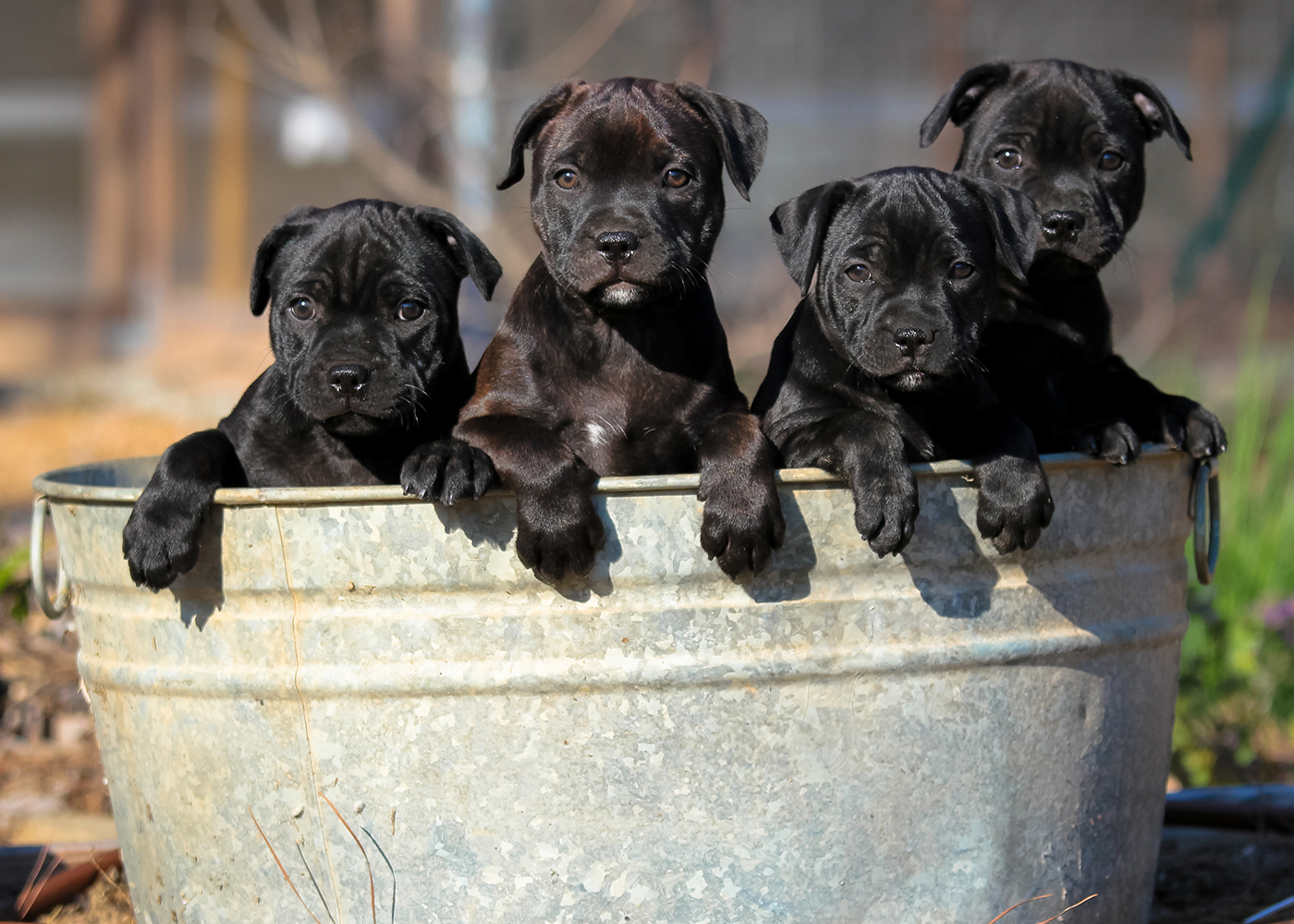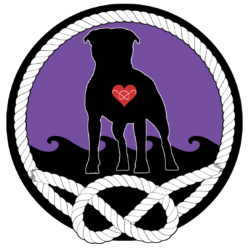I used to love showing my dogs in conformation. In the beginning I went to the dog show just for fun and to spend time with my pet. I attended handling classes every week for many years. I went to handling seminars. I watched professional handlers and picked up tips. I went to UK and AU and watched how people there presented their Staffords I helped friends in other breeds to gain more experience. I showed to any judge without caring what they normally preferred because I was working on honing my own skills. My first show win I was told by other exhibitors that I won because I simply out handled them. It’s true. My dog was a pet. That is the point of this blog entry.
As time went on I became a lot pickier what I would walk into the ring with. I first stopped showing other peoples dogs if I didn’t think it could win BOB. Then I decided not to show dogs I had bred unless I felt they were worthy of a Specialty win under a Stafford breeder judge. I know where my dogs meet or fall from meeting our breed standard. I see all the nuances. I feel no need to ‘hide’ or ‘cover up’ faults I am not keen on just to win a ribbon or fake congratulations from other fanciers. It’s not important.
I feel strongly that unless you can dissect and see these faults and virtues in minute detail in your own dogs then you honestly have no business breeding. The exception is if you are working with mentors and you are learning still and if this is the case then you MUST have an open mind. You must be willing to see the issues pointed out to you, research those for yourself, determine whether or not they do exist and then work to change these faults in the future. None of that is done in a show ring.
In the show ring the best you can do is to understand how to present your exhibit to a judge who hopefully knows and understands the breed and how it relates to the written standard – and is willing to actually JUDGE to that standard. Most of the time the judge has 2 minutes to do that and many of them aren’t willing or able too. It seems it is easier for them to go with what they think is ‘safe’ and assume the professional handlers must have the best ones – right? That was in sarcasm font by the way.
There are times when a handler has a good dog. Sometimes it could be the best dog in the show ring. Many times it is not. There are other breeders like myself who only present their very best. Its not often these dogs are rewarded on a consistent basis. Oftentimes they are overlooked for handlers dogs. Handlers have a lot of skills. They get to practice 4-5 days a week all year long. They are skilled at showing statues and generic movement and flashy handling – ever see them hold the end of a long lead by two fingers while the dog stands perfectly still at the end of it? Looks so pretty doesn’t it. But…..how does that meet that dogs standard? Maybe it does. Maybe not. Maybe it’s just pretty.
Many of us serious Stafford breeders are growing weary of wasting our time, energy, education, and money on bringing good dogs into the ring. I personally have attended shows and looked around seeing a couple very competitive dogs and (wrongly as it turns out) thinking – that’s my competition – and more than that – that’s a dog to follow and he could be a good prospect to keep up my high standards in my breeding plans…..but most judges won’t find these superior dogs. They seem blinded by flash.
Why are entries down? Why are breeds going downhill? Why are poor temperaments rewarded? Why is fat and soft rewarded over fitness and strength? Lazy judges and political games. Thats why. Never mind the general lack of knowledge of canine structure. never mind the serious disinterest in learning breed type. Never mind not understanding good powerful effortless movement. What is the point of showing our best dogs? We already know what we have. We don’t need a stranger who lacks this knowledge to know what we already know.
I show because I am expected to show. Puppy buyers expect me to only breed from Champions. Champion titles in America mean nothing. NOW in sharp contrast – making a champion from ONLY showing in HUGE classes under only other breeder judges means a LOT and this is what we do. HUGE difference to beat 100 dogs under breeder judges and a handler dragging a dog show to show to show barely beating 5 dogs a weekend to title. Think about that.
AKC is a joke. There I said it. Most of us understand why I would say this too. What will it take for AKC to also see this and GREATLY improve their judge education and requirements? I suggest ongoing requirements of judges to continue to meet breeders and visit kennels and talk with breeders and find out the nuances. Most judges simply do not care and I have even been told condescending opinions by judges such as – “You don’t get where I am without knowing the breed” when I look at the dogs they selected and shake my head….walking away wondering what on earth they DO know.
Worse than that recently I overheard judges talking about how Stafford specialties bring over judges from UK and AU and how in their opinions this makes the Stafford breeders snobby. Worse than being called snobby (who cares, more sarcasm font) they went on to then say how these overseas judges don’t know anything at all and how they are terrible at judging. Why do they pick up feet? What are they doing with the coat? What are they doing with their hands on the head and muzzle and shoulders and rears? Why would they kneel down to watch movement? Why do they need to watch the entire down and back? Why are they making funny noises or dangling keys or dropping a ball? OH do you mean why do they ACTUALLY judge the dogs to the written breed standard? Is this the question?
I heard one judge say how breeder judges don’t even know movement or structure and only award heads and friends. ? Okay, so to you all breed judges who only award friends and handlers (don’t forget many judges were also once handlers) that’s different why??? Soo you mean for me to believe that a breeder judge from UK who has lived with Staffords for their entire lives, many of their parents also lived with Staffords, they see Staffords daily in the street, at ringcraft and at shows where the entries can get into the 100’s at times – you mean to tell me those people don’t know this breed? Seriously? Sorry – I simply cannot stop laughing except its not funny.


